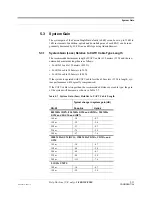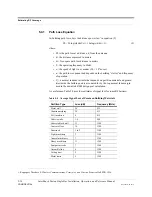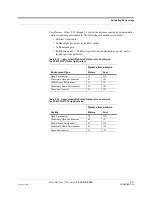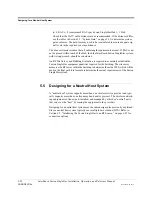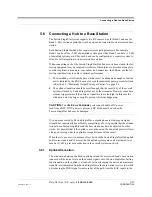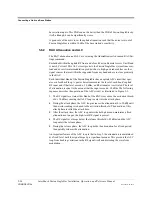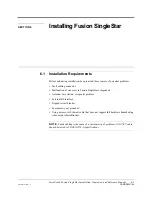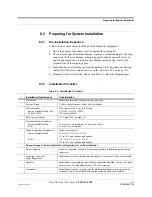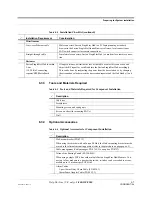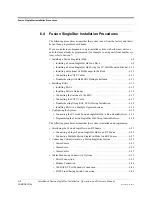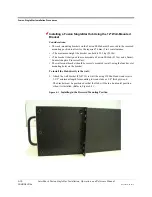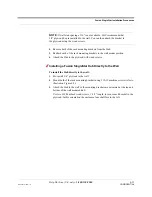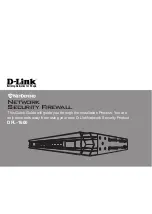
Connecting a Hub to a Base Station
5-24
InterReach Fusion SingleStar Installation, Operation, and Reference Manual
CONFIDENTIAL
D-620605-0-20 Rev A
base station inputs. This SNR can not be better than the SNR of Fusion SingleStar by
itself, although it can be significantly worse.
A good rule of thumb is to set the uplink attenuation such that the noise level out of
Fusion SingleStar is within 10 dB of the base station’s sensitivity.
5.6.2
RAU Attenuation and ALC
The RAU attenuation and ALC are set using the AdminBrowser Advanced RAU Set-
tings command.
Embedded within the uplink RF front-end of each Fusion Remote Access Unit Band
is an ALC circuit. This ALC circuit protects the Fusion SingleStar system from over-
load and excessive intermodulation products due to high-powered mobiles or other
signal sources that are within the supported frequency band and are in close proximity
to the RAU.
Each individual Band of the Fusion SingleStar has an uplink ALC circuit that oper-
ates as a feedback loop. A power detector measures the level of each band’s uplink
RF input and if that level exceeds –30 dBm, an RF attenuator is activated. The level
of attenuation is equal to the amount that the input exceeds –30 dBm. The following
sequence describes the operation of the ALC circuit, as illustrated in Figure 5-2.
1.
The RF signal level into either Band of the RAU rises above the activation thresh-
old (–30 dBm), causing that ALC loop to enter into the attack phase.
2.
During the attack phase, the ALC loop increases the attenuation (0 to 30 dB) until
the detector reading is reduced to the activation threshold. The duration of this
attack phase is called the attack time.
3.
After the attack time, the ALC loop enters the hold phase and maintains a fixed
attenuation so long as the high-level RF signal is
present
.
4.
The RF signal level drops below the release threshold (–45 dBm) and the ALC
loop enters the release phase.
5.
During the release phase, the ALC loop holds the attenuation for a fixed period
then quickly releases the attenuation.
An important feature of the ALC loop is that in Step 3, the attenuation is maintained
at a fixed level until the signal drops by a significant amount. This prevents the ALC
loop from tracking variations in the RF signal itself and distorting the waveform
modulation.


